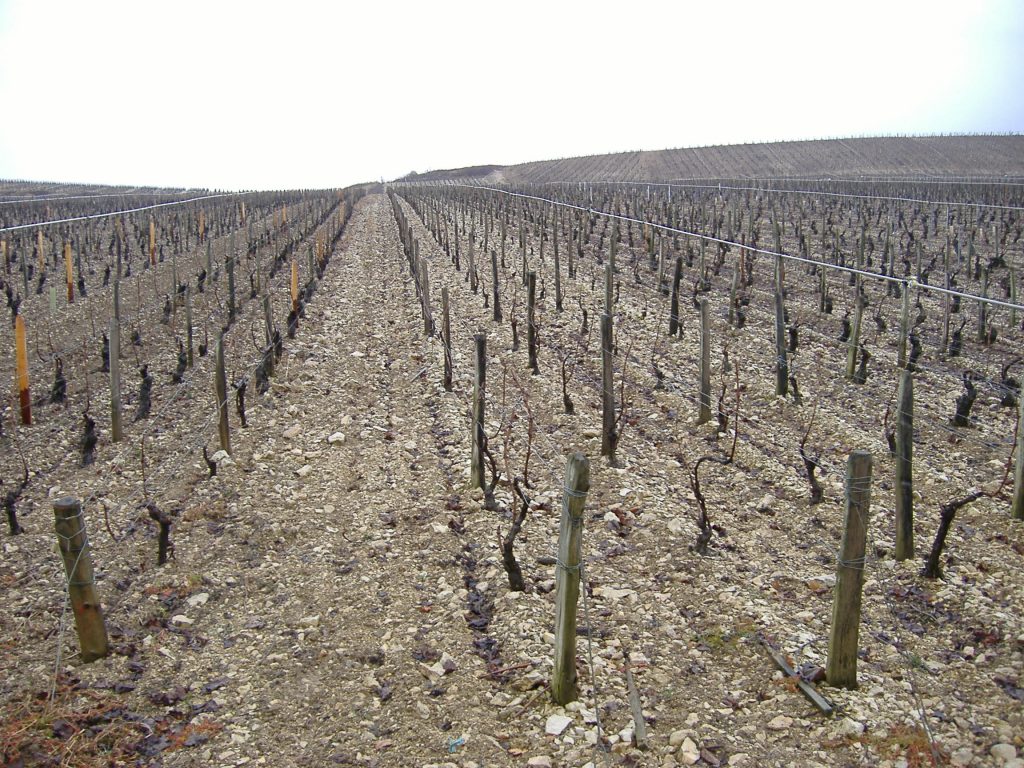In preparation for the 7th edition I’ve completed a review of chardonnay. This versatile grape variety allows the winemaker to demonstrate all the tricks of the trade, and whilst fads and fashions come and go, chardonnay remains ever-popular.
Key Facts
AKA also known as Pinot Chardonnay
Typical aromas
Peach, melon, citrus, mineral, flint, cashew nut, struck match, oyster shell.
Chardonnay can be grown in a range of Australian climatic conditions from the hot, dry Riverland region of South Australia to the cold Macedon Ranges in Victoria. Chardonnay is a popular growers variety, ripening early and suited to all climates. Yields per hectare are good. It retains high levels of acidity even as the grapes reach maturity and is regarded as the most flexible grape variety, allowing a winemaker to dictate the style. Chardonnay is the principal white grape variety that spends time maturing in oak. Malolactic fermentation and time on lees is frequently used during this process to develop a depth of flavour.
Often Australian chardonnay displays peach and melon aromas in warm climates; whilst pear, grapefruit, lime or citrus can indicate cooler climate fruit selection. Aromas of flint, slate, wet stone, oyster shell and a certain dry, austere minerality is another side to chardonnay. This is displayed to its optimum in the Chablis region of France, where the combination of a cool climate and Kimmeridgian soils (composed of fossilized limestone and clay) provide a unique terroir to grow chardonnay.

Travelling south-east of Chablis you come to some of the world’s most renowned and expensive chardonnay in the Burgundy regions of Montrachet and Meursault located in the Côte de Beaune. The wines in Burgundy display rich intense savoury, nutty aromas and take on new oak characters. Travelling further south you come to the Mâconnais region and Pouilly Fuissé which is located in a sunny warmer climate again and here you can find more tropical fruit aromas and richer palate.
Coming back to Australia, the first planting of note were carried out by Penfolds in the Hunter Valley in 1908, a vineyard that is now owned by Tyrrell’s. The Craigmoor winery in Mudgee had early plantings and released its first wine in 1971. Tyrrell’s also produced a commercial chardonnay at around the same time from cuttings that Murray Tyrrell, father of current owner Bruce, surreptitiously took from the Penfolds vineyard.
At an altitude of 550 meters in South Australia’s High Eden sub region Mountadam vineyard were one of the first to plant chardonnay in South Australia and have a rare clone called Marble Hill. The clone was planted by the wineries founder David Wynn in 1972. He discovered an old vine growing around the summer residence of the Governor of South Australia that was believed to have been brought to Australia by a French horticulturalist in 1860. Staying in the Adelaide Hills, renowned winemaker Brian Croser was another early pioneer of chardonnay planting vines in 1979.
With more than 21,000 hectares planted in Australia it is the most prolific white grape variety.
The vine produces outstanding wine in the cooler regions such as Margaret River in Western Australia, Yarra Valley, Mornington Peninsula and Macedon Ranges in Victoria, Adelaide Hills in South Australia and Tasmania. In addition, Tumbarumba and Orange are cool climate sites in New South Wales where chardonnay excels. However, it could be argued that chardonnay is equally successful in hot regions like the Hunter Valley and McLaren Vale. There is no clear regional character coming from Australian chardonnay which is probably due to the influence a winemaker can make in determining the style. However, the climate and choice of clones are other factors in influencing the wine styles.
Cooler climates, achieved by either latitude away from the equator or altitude, as well as moderating maritime influence, will result in higher levels of natural acidity and a more linear structure. Aromas from these wines will often be focused around the green and citrus fruits. The warmer the climate the more the wine will display stone and tropical fruit notes. There is a tendency to pick the grapes early in warm climates to retain as much natural acidity as possible in the wine. Chardonnay needs to retain its acidity to avoid becoming flabby and flat. However, this can be double-edged as it may be at the expense of flavour ripeness.
Australian winemakers have plenty of choice in chardonnay clones, each having their own aromatic profile. The French Dijon clones (e.g. 76, 78, 95) produce melon, lemons and figs. Clone 96 displays grapefruit and is used for sparkling wine base, whilst the American Davis clones (e.g. I10V5 or Mendoza) produce aromas of stone and tropical fruits and higher acidity. Some of the workhorse clones in the Mornington Peninsula, for instance, are P58 which produces wines with a fuller palate and broad bean characters. I10V5 is the most widely planted clone in Australia.
Nick Dry was named Viticulturist of the Year in 2019. He runs a viticultural consultancy called Foundation Viticulture and is an expert on clones. I interviewed him for an article for Winestate Magazine, which you can read here . “I think the quality of clones have helped our chardonnay compete on the world stage. The newest clones have provided an opportunity to produce leaner styles of chardonnay.” The newest clones to come to Australia are from France. The ENTAV-INRA® 548 and 809 arrived in 2004 and ENTAV-INRA® 1066 arrived in 2007. “Out of the new clones, I think ENTAV-INRA® 548 is the standout one. There is also an interesting clone (ENTAV-INRA® 809) that give unusual floral muscat notes. Try Moorilla’s Praxis Musqué in Tasmania.
Western Australia, with its history of strict quarantine laws ( authors note – Ha! that was written before COVID), planted its own particular clone called Gin-Gin. Its origins remained a bit of a mystery until the Australian Wine Research Institute (AWRI) traced it back to a US Californian block of Mendoza clone material.
In the winery some producers follow a ‘funky’ French approach in making their chardonnay. This is achieved by using less intervention, allowing cloudy musts or wild fermentations to achieve a richer mouth-feel, as well as a degree of oxidative handling that would have been frowned upon a decade ago and regarded as poor winemaking. After the fermentation is over the wine may be left in contact with the yeast lees and regularly stirred to building up more levels of complexity and intensity. A great example of this style is Troy Walsh’s Attwoods Two Barrel Chardonnay, which spends 3 years on lees in barrel. (see my tasting notes)

Oak, preferably French, needs to be kept in balance and accompany the fruit rather than dominate it. Oak maturation can give an array of aromas to the wine including vanilla, oatmeal, nuts, woody, smoky, butterscotch, or pencil shavings. Winemaker will experiment with varying amounts of MLF to get the right blend. MLF produces two useful by-products for chardonnay; the first is ethyl lactate, which enhances the sensation of weight or body on the palate. The second is diacetyl which gives that desirable buttery aroma which builds complexity, when used in moderation. There is currently a trend in Australia to restrict MLF and retain as much natural acidity as possible in a wine. Unoaked styles usually display richer fruit character, but not always. These styles, often designed to be consumed young (1 to 3 years old)
Summary –
Chardonnay falls into a number of different stylistic camp
- Traditional – ripe fruit, full bodied, oak driven and buttery MLF style that Australia built its international reputation on – sunshine in a glass. Definitely has its followers. Others hate it.
- “Me-too” Chablis wines – lean, citrus, minerally with high acidity. Sometimes hard to see the variety in them. Can be one dimensional but again has its supporters. Try Penfolds Bin 311 or Garagiste Le Stagiaire 2019.
- Reductive intelligentsia – interesting wines that can be complex, but sometimes come up short. Struck match and hopefully more ‘funky’ notes and structured palate make these a winner.
- Hands off – oxidative, nutty and autolytic. Runs a fine line between greatness and losing the plot.
- 50/50 – the type of wine that edges its bets and doesn’t sit in one camp or another. Possibly the best option!
Recent chardonnay reviews. Full tasting notes can all be found here
Outstanding
Attwoods Two Barrel 2018
Penfolds Yattarna 2019
Highly Recommended
Vasse Felix Filius 2020
Curly Flat 2018
Hanging Rock Jim Jim 2018
Leogate Estate Vicki’s Choice 2015
Penfolds Reserve Bin A 2016
Bird in Hand Nest Egg 2017
TarraWarra Estate South Block 2015
Yeringberg 2015
Oakridge Estate 864 2015
Paringa Estate 2016
Joshua Cooper Cope Williams Vineyard 2019
Freycinet 2015
Recommended
Attwoods Glenlyon Estate 2019
Pantagenet York 2018
Murdoch Hill Rocket 2018
Oakridge Over the Shoulder 2019
Sidewood Mappinga 2018
Garagiste Le Stagiaire 2019
Silent Way Chardonnay 2017
Trentham Estate Reserve Tumbarumba 2018
